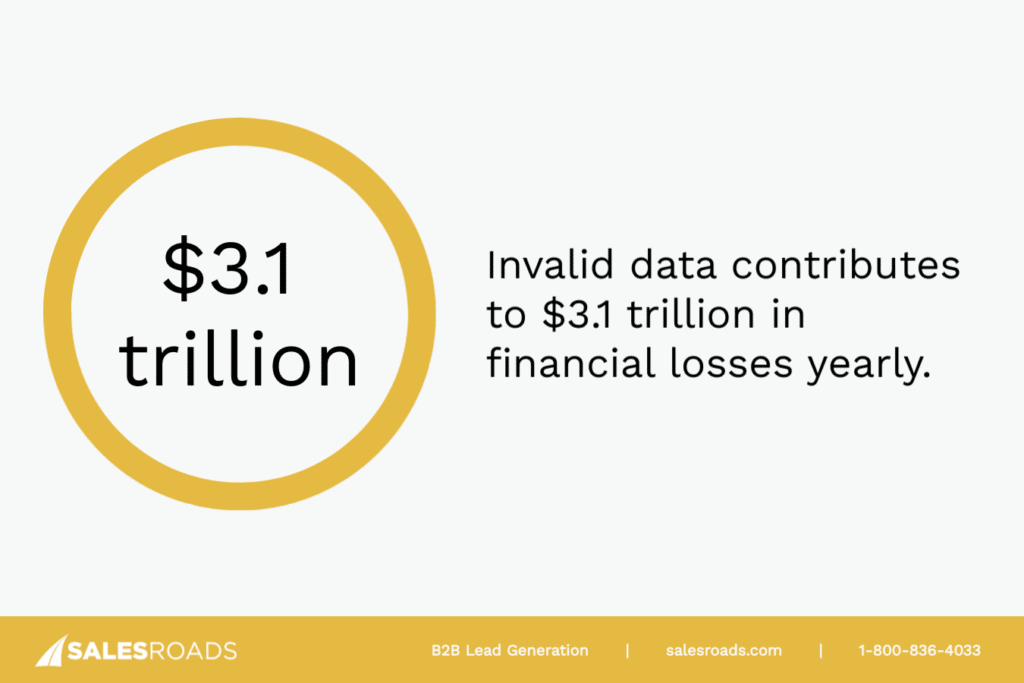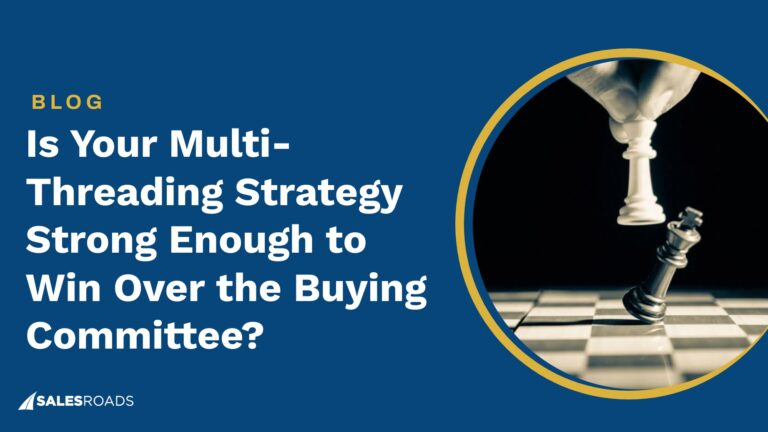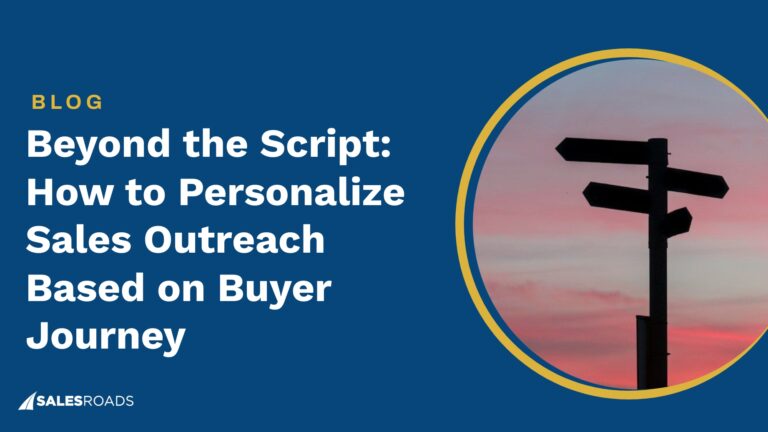For sales reps, the pitfalls of a non-targeted lead generation approach can be significant, from wasted time chasing low-potential leads to diminished sales efficiency and morale.
The solution lies in embracing a targeted lead generation strategy that zeroes in on engaging with highly qualified prospects. It transforms the sales process by ensuring their efforts are directed toward the most promising opportunities.
What is Targeted Lead Generation?
Targeted lead generation is a strategic approach where sales efforts are focused on identifying and engaging with a specific segment of potential customers. These customers are selected based on defined criteria that make them more likely to be interested in and purchase your product or service.
Targeted lead gen has benefits that yield greater revenue, such as:
- Improved efficiency and effectiveness: By focusing on leads that are more likely to convert, businesses can use their resources more efficiently. Sales teams spend less time on unproductive leads and more on those with a higher likelihood of making a purchase.
- Higher conversion rates: Since targeted leads are pre-qualified based on specific criteria, they are generally more receptive to sales efforts. This receptiveness often results in higher conversion rates compared to a broader, non-targeted approach.
- Enhanced customer engagement: Targeted lead generation allows for more personalized communication. Tailored messages resonate better with potential customers, leading to increased engagement and a stronger connection between the customer and the brand.
- Cost-effectiveness: By targeting the right audience, businesses can reduce the cost per lead and improve the overall return on investment of their sales campaigns.
- Better product or service alignment: When businesses target specific leads, they can align their products or services more closely with the needs and preferences of their target audience. This alignment can lead to increased customer satisfaction and loyalty.
Targeted lead generation is a focused approach that not only maximizes the effectiveness of your sales efforts but also leads to deeper customer relationships, better market insights, and improved ROI.
Building Targeted Lead Generation Campaign in 6 Steps
Every company has a target audience, which means different target lead generation strategies resonate with varying types of businesses. Here are tips for building a strategy tailored to your company’s needs and objectives:
Step 1: Define Your Ideal Customer Profile (ICP) and Total Addressable Market (TAM)
The journey of targeted lead generation begins with a meticulous identification of your Ideal Customer Profile (ICP) and a comprehensive understanding of your Total Addressable Market (TAM). This step is crucial in shaping a sales strategy that is not just effective but also highly focused.
Understanding Your ICP
Defining your ICP involves a thorough analysis of the characteristics that define your most valuable customers. This is more than just a demographic overview; it’s about painting a detailed portrait of the entities most likely to benefit from your service or product.
Key aspects include:
- Industry Specifics: Identifying the industries where your offerings have the most impact or demand.
- Company Size: Understanding whether your products or services are better suited for small businesses, mid-market companies, or large enterprises.
- Decision-Maker Roles: Pinpointing the typical roles or titles of decision-makers who find your offerings most appealing or necessary.
- Pain Points: Uncovering the specific challenges or needs that your product or service addresses.
- Buying Behaviors: Analyzing how these ideal customers make purchasing decisions, including budget cycles, preferred outreach channels, and the factors that influence their decisions.
Gauging Your TAM
Once your ICP is clearly defined, the next step is to assess your TAM. This is about determining the overall market potential for your offerings. Understanding TAM allows you to set realistic sales targets and allocate resources more efficiently.
It involves:
- Market size estimation: Estimating the number of potential customers within the ICP categories.
- Geographical reach: Determining the geographical boundaries where your ICP is located, which might include local, regional, national, or global markets.
- Market trends and growth potential: Keeping abreast of market trends, potential growth areas, and changes in market size to ensure your sales strategy remains relevant.
Leveraging ICP and TAM Knowledge
With a clearly defined ICP and an understanding of your TAM, you can refine your lead generation strategies for heightened effectiveness. This knowledge allows for the creation of customized messaging that speaks directly to the specific needs, pain points, and preferences of your ICP and informs how you allocate your sales resources.
By targeting the most promising market segments identified in your TAM analysis, you can optimize your investment and increase the ROI of your sales efforts. This strategic allocation of resources ensures that every dollar is spent where it has the highest potential for returns.
In essence, a deep dive into identifying your ICP and understanding your TAM forms the foundation for a targeted lead generation strategy. It ensures that your sales team’s efforts are directed toward the most promising prospects, thereby maximizing the potential for successful conversions and increasing revenue. This strategic approach is instrumental in minimizing wasted efforts and enhancing the overall effectiveness of your sales initiatives.
Step 2: Build a Comprehensive Prospect Database
In the poll, David Kreiger, the President of SalesRoads, conducted, 45% of respondents said the biggest barrier to hitting their targets is the prospecting data.
List building is much more than just collecting contact information; it’s about creating a vital resource that’s at the heart of successful sales strategies. This process significantly impacts the effectiveness of cold outreach and the overall success rate of appointment setting efforts.

In the United States, businesses face substantial financial losses due to inaccurate data, with the B2B sector alone losing an estimated $3.1 trillion annually.
This staggering figure highlights the critical importance of precise data management. A list that is poorly constructed or contains invalid data can lead to a multitude of problems, from wasted efforts to missed opportunities.
Creating a high-quality prospect list is a result of thorough research and strategic thinking. It involves considering various factors that, together, enhance the list’s effectiveness. When it comes to purchasing lists from data providers, caution is key. It’s essential to ensure that these lists are not just current and accurate but also compiled in a manner that adheres to legal and ethical standards.
While automated tools offer a broad and efficient means of data collection, adding a manual research component can provide depth and precision that’s particularly vital for targeting leads in niche markets or specialized roles. This might include reviewing LinkedIn profiles, exploring company websites, or scouring industry publications to validate and enrich the data you’ve gathered.
Such a proactive approach enables a deeper dive into specific industries or job functions, often uncovering valuable prospects that might be overlooked in automated databases.
Step 3: Segmentation
Market segmentation is the process of dividing a company’s target market into an approachable group. It stands as a pivotal factor in sculpting successful targeted lead generation strategies.
This precision pivots on the ability to not only identify but also effectively utilize various segmentation types, ensuring that your sales efforts are honed to resonate with the nuanced needs of each segment.
In cold outreach, salespeople often rely on a combination of segmentation types to identify and effectively communicate with potential leads. The most commonly used segmentation types in this context are:
Firmographic & value segmentation:
For B2B companies, firmographic segmentation (like company size, location, revenue, industry) and value segmentation (based on purchase frequency, quality, and quantity) are vital. They enable a more strategic approach, focusing on organizations that present the highest potential for conversion and value generation.
Geographic segmentation:
Targeting prospects based on their location is critical, especially for products or services that are region-specific or when the sales strategy includes localizing outreach efforts to match regional preferences or needs. This localization fosters a sense of relevance and connection, making your proposition more appealing and relatable to potential leads.
Behavioral segmentation:
This involves segmenting leads based on their behavior, such as their previous interactions with the company such as website visits, meetings booked, calls, buying habits, and product usage. This segmentation is beneficial for personalizing the outreach approach based on the prospect’s known interests or engagement level.
Sales teams can tailor their pitches to align with the lead’s historical interactions, thereby increasing the relevance and appeal of their proposition.
Seasonal segmentation:
Understanding the timing of your leads’ needs can significantly enhance the relevance of your outreach. This involves aligning your sales efforts with specific times in the year or pivotal moments in the life of a consumer, ensuring that your proposition is not just seen but is also timely and pertinent.
For example, major holidays significantly impact decision-makers’ buying behaviors. Seasonal segmentation creates a subset for these behaviors, allowing companies to develop better strategies for upcoming holidays.
Step 4: Leveraging Technology and Tools
The adoption of cutting-edge technology and tools is not just an advantage; it’s a necessity. The integration of sales intelligence tools, CRM software, and lead automation platforms is pivotal in transforming lead generation from a hit-and-miss endeavor into a streamlined, precision-driven process.
- Sales intelligence tools: Sales intelligence tools are the compass that guides sales teams through the vast sea of data, helping them navigate directly towards high-value prospects. These tools go beyond the basic data collection, offering deep insights into potential leads. They enable sales professionals to uncover critical information such as organizational changes, funding news, industry trends, and technology adoption.
- CRM software: Customer Relationship Management software stands as the backbone of efficient lead management. It’s the central repository where every interaction with a prospect is tracked and analyzed. A robust CRM system doesn’t just store data; it offers a panoramic view of the sales pipeline, highlighting opportunities and potential bottlenecks. It empowers sales teams to manage relationships more effectively, ensuring that no lead is left unattended and that follow-ups are timely and pertinent.
- Lead automation software: Lead automation software is akin to having an ever-vigilant assistant, tirelessly working to optimize the lead generation process. These platforms automate repetitive tasks such as lead capture, segmentation, and initial outreach. By taking over these time-consuming chores, lead automation software frees up sales teams to focus on what they do best – building relationships and closing deals.
The true potency of these tools lies in their symbiotic relationship. When sales intelligence tools, CRM software, and lead automation platforms are integrated, they create a cohesive ecosystem that supports every stage of the lead generation process.
This synergy ensures that the lead data is not only accurate and comprehensive but also actionable. Sales teams equipped with these tools can anticipate needs, personalize their outreach, and engage with prospects in a manner that is both timely and contextually relevant.
Step 5: Crafting Effective Outbound Outreach
The fourth step in a successful targeted lead generation strategy involves initiating a highly focused outbound outreach. This step is a culmination of the meticulous groundwork laid in defining your ICP and TAM, building a comprehensive prospect database, market segmentation, and leveraging technology and tools.
With a segmented list derived from your ICP and TAM analysis, your outreach efforts can now be finely tuned to each segment’s unique characteristics. This involves crafting personalized communication, be it through LinkedIn prospecting, cold calls, and emails.
Sales intelligence tools and CRM systems can help automate and track your outreach efforts, providing valuable insights into what strategies are working and what needs to be adjusted. They also ensure that all communications are logged and tracked, allowing for a consistent and coordinated approach across your sales team.
Effective outbound outreach is not a set-and-forget strategy. It requires continuous monitoring and refinement. By analyzing the responses and engagement rates of your outreach efforts, you can continually fine-tune your approach. This might involve adjusting your messaging, experimenting with different communication channels, or even revisiting your ICP and TAM definitions to ensure they still align with the market reality.
This is where your preparatory work comes into action. It’s about using the rich data and insights you’ve gathered to engage with your prospects in a meaningful way.
This stage is critical in turning your prospect list into actual business opportunities, setting the stage for successful conversions and revenue growth. It underscores the importance of precision and personalization in your sales approach, ensuring that your efforts resonate deeply with your prospects’ specific needs and interests.
Step 6: Measure, Analyze, and Iterate
Gauging the effectiveness of targeted lead generation strategies is not just a best practice; it is integral to the sustained success of any sales operation.
Establishing key performance indicators:
The first step in measuring effectiveness is to establish clear KPIs. These should be aligned with your business goals and could include metrics such as the number of leads generated, lead-to-opportunity conversion rate, cost per lead, and the overall ROI of the lead generation activities. By tracking these KPIs, you can gain a quantitative understanding of how well your strategies are performing.
Utilizing analytics and CRM data:
Leveraging the power of analytics tools and CRM data is crucial in this assessment. These resources provide in-depth insights into lead behavior, engagement patterns, and conversion rates. By analyzing this data, you can identify which strategies are yielding the best results and which ones require modification. This analysis should go beyond surface-level metrics to encompass lead quality, engagement duration, and the effectiveness of different communication channels.
A/B testing for strategy optimization:
A/B testing is an invaluable tool for fine-tuning your lead generation strategies. By testing different variables in your outreach – such as testing the different messaging in similar market segments – you can determine which messaging resonates best with the segment. This method allows you to make data-driven decisions, ensuring that your strategies are not based on assumptions but on actual customer responses.
Incorporating feedback loops:
Incorporating feedback from both your sales team and your customers can provide invaluable qualitative insights. Sales reps can offer frontline insights into customer responses and obstacles in the sales process, while customer feedback can highlight areas for improvement in your outreach and offerings.
Measuring the effectiveness of your targeted lead generation strategies is an ongoing process that combines quantitative data analysis with qualitative insights. It not only enhances the efficiency of your lead generation efforts but also significantly contributes to the overall growth and revenue potential of your business.
Best Targeted Lead Generation Strategies Every Sales Rep Needs to Know
The effectiveness of your lead generation efforts hinges not just on the precision of your prospect list but also on the diversity and sophistication of your strategies. Here are some of the most effective targeted lead generation strategies for salespeople:
Personalization
Personalization has emerged as a game-changing strategy in targeted lead generation. It transcends the traditional methods of outreach, focusing on creating connections that are uniquely tailored to each prospect’s specific needs and interests.
This understanding enables the creation of messages and content that are not just relevant but also highly engaging for the individual needs of each lead.
Implementing personalization in your lead generation strategy involves several steps:
- Data collection and analysis: Collect as much relevant information about your prospects as possible. Use this data to segment your list and tailor your outreach.
- Content customization: Develop content that speaks directly to the interests and needs of each segment. This could include personalized emails, targeted social media content, or custom landing pages.
- Feedback and adaptation: Use feedback from your outreach efforts to continuously refine and improve your personalization strategy. Monitor metrics such as engagement rates and conversions to gauge effectiveness.
While personalization can significantly enhance lead generation efforts, it does come with challenges. Ensuring data privacy and compliance with regulations like GDPR is crucial. Additionally, personalization requires a balance – it should be meaningful without being intrusive or overly familiar.
Appointment Setting and Contact Form Optimization
Appointment setting remains a cornerstone of direct lead generation strategy where sales reps proactively reach out to potential leads to schedule meetings with Account Executives (AEs). It’s a hands-on method that ensures direct engagement with prospects, allowing for a more personalized pitch and immediate feedback.
It’s also common for leads to enter the sales funnel by visiting your company’s website and voluntarily filling out a contact form. This self-directed action by leads signifies a high level of interest and intent, as they are actively seeking more information or engagement with your services or products.
However, not every prospect is equally qualified. Optimizing your contact forms allows you to get more than just contact information. It can help you save effort and target the right people for lead generation.
Optimizing contact forms includes qualifying questions that help in pre-filtering leads that fit your ICP or buyer persona, enhancing lead quality, and streamlining the sales process.
Social Selling on LinkedIn
LinkedIn has revolutionized the approach to targeted lead generation. Its unique alignment with professional networking makes it an invaluable asset for sales teams aiming to connect with key decision-makers and influencers in various industries.
LinkedIn’s environment, where professionals not only connect but also share insights, industry news, and personal achievements, offers a rich tapestry for sales representatives to weave their strategies. It’s not merely about having a well-crafted prospect list; it’s about engaging with that list in a meaningful, insightful manner.
- Precision targeting with LinkedIn: The strength of LinkedIn for targeted lead generation lies in its ability to facilitate connections with precisely the right people. Sales teams can leverage LinkedIn’s advanced search capabilities to pinpoint individuals who fit their ideal customer profile, from job titles and company sizes to industry sectors and geographical locations. This level of specificity ensures that the outreach efforts are directed toward individuals most likely to have a genuine interest in the service or product offered, thereby increasing the likelihood of successful engagement.
- Leveraging LinkedIn’s unique features: LinkedIn provides a suite of features tailor-made for targeted lead generation. Sales Navigator, for example, offers enhanced search capabilities, lead recommendations, and real-time insights on existing leads and accounts. These features allow for a more personalized and informed approach to outreach, ensuring that communications are not just reaching the right person, but are also resonating with their current professional needs and interests.
Social selling on LinkedIn represents more than just another channel for lead generation; it’s a strategic, relationship-building tool that aligns perfectly with the modern approach to B2B sales.
Leveraging Referrals
Referral strategy deeply rooted in the natural human tendency to trust peer recommendations, stands as a potent pillar in targeted lead generation. People tend to trust recommendations from their peers, making this an excellent source of pre-qualified leads.
It’s crucial to recognize that valuable referrals aren’t solely the domain of committed customers; they can emerge from a variety of interactions, including those with prospects who initially declined your offer. This insight underlines a fundamental principle: the relationship doesn’t end when the prospect says ‘no.’ On the contrary, it’s often the beginning of a different kind of connection.
This perspective mandates a shift in approach, where nurturing relationships and fostering rapport extend beyond the immediate sales cycle. Maintaining contact, offering value, and continuing to demonstrate your understanding of their industry challenges can position your organization favorably in their professional network. This approach not only salvages potentially lost opportunities but transforms them into new avenues for growth.
Bottom Line
Targeted lead generation isn’t just a tactic; it’s a transformative approach that reshapes how you connect with potential customers. By focusing on the most promising prospects, you’re not just saving time and money; you’re investing in strategies that pay off. And remember, you don’t have to navigate this journey alone.
If you’re looking to enhance your strategy without the added burden, consider outsourcing to a seasoned partner in targeted lead generation, saving both time and money while boosting your sales results.










